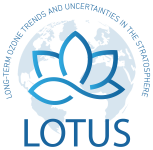Speaker
Description
The motivation for the initial phase of the SPARC Long-term Ozone Trends in the Stratosphere (LOTUS) project was to clarify from a community perspective our best estimate of stratospheric profile ozone trends and related uncertainties based on a variety of satellite and ground-based observations. The satellite-based records were all merged ozone products, many of which in part shared data from common sources. This initial phase culminated in a report published in early 2019, which was included in the 2018 WMO Ozone Assessment. Though an innovative approach was developed to quantify the uncertainty in the trend as estimated from the collection of merged records, the report highlighted the need going forward for a better understanding of the differences between individual satellite records within each merged data product.
The Solar Backscatter Ultraviolet (SBUV) based Merged Ozone Data (MOD) record is one such merged record used in LOTUS. MOD is a 40+ year time series of ozone profile data constructed from a series of eight SBUV instruments and the next generation Ozone Mapping and Profiler Suite (OMPS) Nadir Profiler (NP). Individual instruments are inter-calibrated within the SBUV retrieval algorithm. We have developed a new calibration approach to better understand and characterize the small sources of bias, seasonal variability, and drift that exist between instruments and thereby contribute to the uncertainty of the merged record. We also improved the representativeness of the A Priori in the retrieval algorithm, and now account for diurnal variability between instruments measuring at different times of day. After applying the newly-derived calibrations and several other algorithm improvements, we construct a new version of MOD and reevaluate the long-term ozone trend as well as the uncertainty in the record in accordance with the recommendations for Phase 2 of LOTUS.

